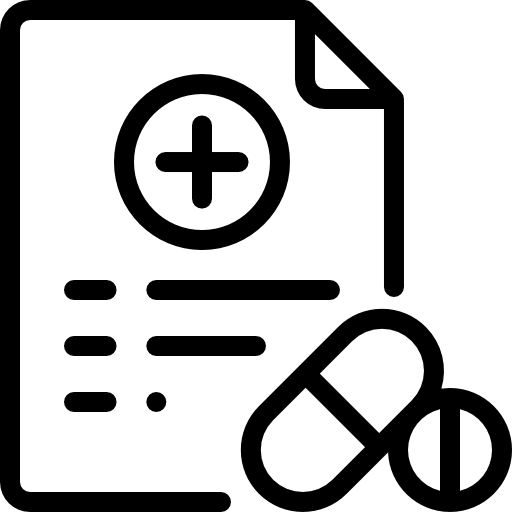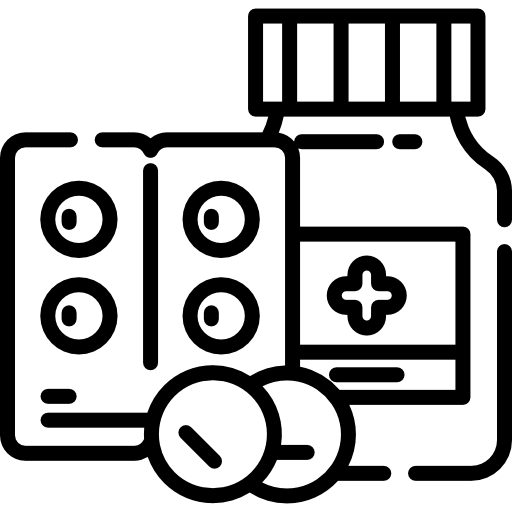
Foreword
Cannabis as a Medicine

Prescribing
Clinical Strategy

Peer Insights
Interviews with Health Professionals

Current Situation
Utility

Pharmacy
Good Pharmacy Practices

Tables
Medicine Interactions, Patient Information

Pharmacology
Pharmacodynamics, Dose forms, Pharmacokinetics

Nursing
Good Nursing Practices

References
Literature and Reading
Pharmacy
Article
Coming soon
Audio
Coming soon
Quiz
Coming soon
Annunziata Lombardi
Annunziata Lombardi is head of the compounding laboratory producing magistral preparations at Farmacia Caputo, a family owned pharmacy in Nocera, Italy. She is a founding member of the medical cannabis committee in 2017, and was a lead contributor to the regional medicinal cannabis reimbursement law. Annunziata has post graduate qualifications and professional interests in clinical pharmacy, pharmaceutical medicine formulation, clinical and traditional compounding, medicine quality control, and regulatory affairs. Additionally, Annunziata directs a laboratory specialising in cannabinoid analysis, providing her insight to various analytical challenges.
Training/Education
What training did you receive before you started dispensing cannabis based medicines?
In 2013, The Italian Ministry of Health had just passed a new law, and I started considering the idea of preparing medical cannabis . Despite scepticism from my family, colleagues and physicians, I decided to challenge the status quo and give this new therapy a try. No formal training was available at that time to prepare me. I still remember my first order 10 years ago, receiving three 5 gram pharmacy containers of Bedrocan® flos. I was nervous. Now, I have dispensed over 20,000 cannabis based medicine preparations, most as oil extracts for oromucosal administration. The number continues to grow annually.
After an initial learning-by-doing phase, I decided to improve my theoretical and practical knowledge. I travelled to the Netherlands to attended the Cannabis Master Class in Leiden. This training gave me insights which I have used in my daily laboratory practice. Since then, I have linked in with experts in this field with different backgrounds to create a very fruitful network. In 2016, I was one of the founders of the IEO (European Oncology Institute), a cannabis working group with organisations in Naples, Milan and Modena.
Dispensing experience
How long have you dispensed cannabis-based medicines?
I started preparing and dispensing in 2014 as one of the pioneers in the Italian market.
Can you describe a typical patient to whom you would dispense cannabis based medicines?
There is no typical patient because cannabis-based medicines can be used for all age groups and for multiple pathologies. The Italian National Health Insurance reimburses cannabis-based medicines, as magistral prescription preparations, for a limited number of medical indications: anorexia/cachexia, glaucoma, Tourette syndrome, spasms and pain induced by chemotherapy, vomit and lack of appetite in chemotherapy patients.
In my experience, the most recurrent diseases are chronic pain, fibromyalgia and neurological problems. There is also a growing demand from patients suffering from autism, anxiety, and sleep disorders.
Thinking about a first interaction with a patient, how do you start a conversation about the safe and effective use of cannabis-based medicines?
My role and duty as a pharmacist is to verify that the patient has correctly understood the instructions given by his/her physician. I explain the patient the pharmacokinetic and pharmacodynamics interactions with other medicines as well.
How is that different to a follow-up interactions at the pharmacy?
The follow-up with the patient covers questions regarding the safety and efficacy of the therapy. I normally use the Medicine Use Review process to interview the patient in a structured and organised way, and keep records of their feedback.
Additionally, I ask my patients about the positive effects in terms of QOL, symptoms improvement such as pain relief, or seizure reduction, and the adequacy of the dosage. Patients also provide feedback on taste and intolerances which is potentially used to develop new formulations, and test new carriers and excipients.
Patient considerations
Thinking about a first interaction with a new patient, how do you start a conversation about cannabis-based medicines?
Assuming that the physician has clearly explained the basics of the therapy, I normally focus on the practical side of administering the medicine.
If the administration route is inhalation, I explain how a vaporiser can be operated, cleaned, and maintained. If oral administration is chosen, I talk about the differences between oro mucosal and oral administrations, and train the patient on the most effective route.
Dosage is a crucial point as it often determines the success or failure of a therapy and the drop-out rate. Patients are also interested in the reimbursement criteria and process of the prescriptions, and how to properly store the medicine.
Are you aware of patients experiencing interactions with cannabis-based medicines and other medicines?
Yes. Most side effects are caused by interactions with other medicines because cannabinoids may modify our metabolism and influence their performance.
Administration
Oral dose forms (oil extracts) are an increasingly popular mode of administration, what advice do you give patients on safe use?
In Italy, cannabis extracts, for oromocosal dosing, account for 80% of prescriptions. I train my patients on the proper dosage to convert the mg of active substance (THC and CBD) prescribed by the physician into mL and/or drops of extract. This conversion is different for every extract, and it is based on the post-extraction HPLC analytical results.
In Italy, pharmacists must analyse the extract for cannabinoid content after production and state this on the label before dispensing. This helps the patient know the amount of active substance taken.
Vaporisation is an increasingly popular mode of administration, what advice do you give patients on safe use?
I recommend the use a medical device because it guarantees the quality and the reproducibility of the therapy. However, some patient cannot afford a medical device and opt for another type of vaporiser. In any case, I ask the patient to pay attention to two aspects: (1) the vaporiser temperature, because naïve patients may experience major side effects if the temperature is set too high, (2) the timing of the onset of action, which can be extremely rapid with this administration route.
What do patients say about the administration of cannabis-based medicines by vaporisation?
Patients who need an immediate effect to control tremors, intense pain, and seizures appreciate the rapid onset of action provided by inhalation. The main disadvantages of this route are: it is not discrete and often cannot be used in public spaces; the cost of the vaporiser is high; some patients do not have the pulmonary power to actively inhale.
What special considerations should pharmacists be aware of for patients taking oral dose forms?
Pharmacists must inform the patient that the onset of the oral dose form is slow and can take up to 3 hours. The patient must be aware of that and wait for the effect and not take additional medicine.
Safety
Are you aware of any patients that have experienced interactions of cannabis-based medicines with other medicines? If yes, please describe the major interactions.
Typical interactions take place with neuroleptic medicines and lead to, for example, increase in appetite, dizziness, tachycardia, fatigue.
What are the actual and potential complications with cannabis-based medicines?
Oil extracts as well as inhalable preparations are not tolerated by every patient. New pharmaceutical forms with improved bioavailability and usability, such as water-soluble solutions, dry inhalable powders, sublingual tablets, oral powders, and so forth, must be developed in the future to access a wider patient base.
Another critical aspect of this therapy is the variability of the different Cannabis strains [cultivars]. Current studies have not identified a clear correlation between strain, type and quantity of cannabinoids, pharmaceutical form, and dosage and their effect on specific medical indications. A structured and large data collection using AI are needed to make sense of this complexity and exploit this vast pharmacological treasure.
What is the role of the pharmacy profession in ensuring patient safety with the use of these medicines?
For Italy it might be a bit different than that of colleagues from other countries. Here, we give a lot of importance to the personalisation of this medicine. Doing an extraction in the pharmacy rather than buying standardised extracts from the industry gives us full potential for customisation by choosing different Cannabis strains [cultivars], oil carriers, extraction methods, and concentrations. In this case the pharmacist role is to make a high-quality product using a safe and reproducible extraction process. In Italy we have defined some limits and parameters to control the quality and acceptability of compounded cannabis extracts.
Do you encounter diversion, misuse, or abuse of cannabis-based medicines?
Yes, but I consider this phenomenon limited to a very few cases. The average quantity of cannabis per patient in Italy is relatively low. Indeed, most Italian patients are using oral extracts rather than inhaling or smoking, which reduces the risk for abuse to a minimum.
How do you identify this issue in your practice?
When I receive prescriptions with very high dosage for inhalation in young patients or the patient finishes the medicine earlier than expected and comes back with a new prescription, I normally become suspicious.
I call first the patient and try to understand why he/she increased the dosage and ran out of medicine. After that I may call the physician to cross check this information.
Medicine type/dose forms
How is cannabis-based medicines different to storing and dispensing other medicines (for both herbal material and for oral dose forms)?
I store cannabis in a separate area with restricted and recorded access. Dispensing requires a magistral prescription because it is an off-label medicine. Moreover it is classified as doping and narcotic which makes it even more complicated.
Are there any special considerations you make when dispensing cannabis based medicines (i.e. oil extracts)?
I make sure that the patient has clearly understood the therapeutic plan prescribed by the physician, and I check potential interactions with other medicines. With oil extracts I pay particular attention to the titration plan, and the use of pipette or graduated syringe for the correct administration under the tongue.
Are there any special considerations you make when dispensing a herbal medicine (as cannabis flos)?
I pay attention to the vaporiser and train the patient on the use and setting of the device. I prepare single doses weighted, milled (in some case whole flower), packed and labelled individually in aluminium bags. These are ready-to use and the patient takes a known and precise quantity.
Therapeutic regimen
What are the key benefits of using cannabis-based medicines?
Almost no severe side effects. It improves several medical conditions where alternative medicines have low efficacy or lead to important side effects. Cannabis represents a new frontier in medicine acting on modulating the endocannabinoid system.
What are the key risks of using cannabis-based medicines?
I do not see major risks using oil extracts and only a minor risk for abuse using flos. The bigger risk to make the wrong choice in terms of strain [cultivar] and dosage leading to poor results and a high drop-out rate.
What do you think are pharmacy practices that improve patient outcomes?
Correct and relevant information to the patient. Collect feedback from all patients and identify trends and correlations between strain, dosage, pharmaceutical form and concentration. Train physicians on cannabis magistral prescriptions because the level of clinical expertise is still relatively low.
How closely do pharmacists work with the prescribing doctor?
They have an extremely close relationship. There is an ongoing interaction between the doctor, the pharmacist and the patient to adjust the therapy. In the context of cannabis based medicines, the pharmacist has rediscovered their dimension and vocation and is recognised by doctors and patients as in the triangle Doctor-Pharmacist-Patient.
Final remarks
Do you have any good advice (tips) for pharmacists starting out?
- Be passionate about what you do. This is an exciting professional opportunity and it is nothing like dispensing finished drugs
- Be convinced that you are part the cannabis-based medicines revolution and this is just the beginning.
- Go to cannabis conferences and trainings in your country and abroad if you have the chance.
- Read scientific literature. There is lot of academic and clinical research going on.
- Collect feedback and data.
- Look for other professionals who share your interest. Do not stop at pharmacists but look for physicians, scientists, patients and anybody who can help you enrich your knowledge.
- Build-up strong and solid relationships with physicians and patients.
